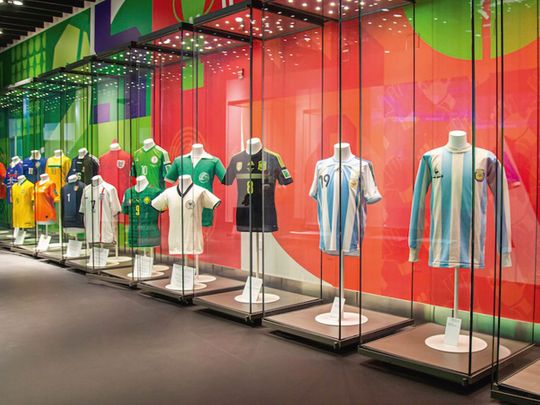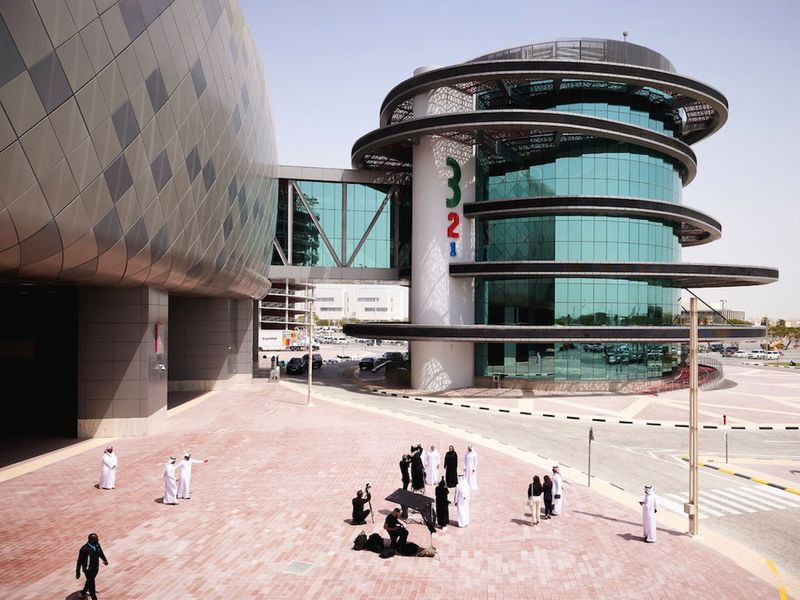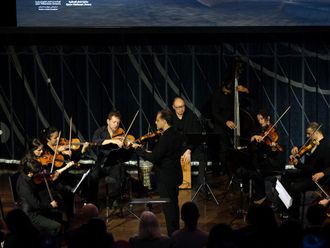
In the foot steps of legends
3-2-1 Qatar Olympic and Sports Museum presents the “Qatar Football History: Discover a Journey of 75 Years” exhibition in historic Doha Stadium, where the country’s football history began on a simple sand pitch.
From a sand lot, to all the eyes of the world thrust upon Qatar, the tiny Gulf nation with a population of just 2.6 million has certainly come a long way. Football used to be played on pitches made of sand and it wasn’t until the 1960s, when Doha Stadium was built, that the country’s first ever grass football field was introduced. Just weeks ago, the world’s greatest sporting spectacle was played out under the lights of Lusail Stadium, the FIFA World Cup Final, with a tournament viewership projected to number around 5 billion people.
Qatar’s embrace of human sporting endeavours is a nationwide cultural push, inspiring generations of youngsters towards a better, healthier future. Along with the biggest sports event ever hosted by an Arab country, the FIFA World Cup has energised Qataris to encourage, educate and engage visitors in the significant role of sports in contemporary history.
One of Qatar’s latest museums opened earlier this year, just before the summer, committed to just such a cause: the new 3-2-1 Qatar Olympic and Sports Museum is located at Khalifa International Stadium, part of Qatar’s Aspire Zone Foundation also known as Doha Sports City, a sprawling 250-hectare complex.
Throughout the duration of the World Cup, alongside its seven permanent galleries the museum was additionally presenting the “Qatar Football History: Discover a Journey of 75 Years” exhibition at the iconic Doha Stadium, the first football stadium in the country. It was on this pitch where Qatar’s sports history was written, where giants such as the late three-time FIFA World Cup winner Pelé played against Qatar’s oldest football club, Al Ahli, in 1973, and where “The Greatest”, Muhammad Ali, packed the stadium for sold-out bout in 1971. The exhibition highlights the earliest of beginnings in Qatar’s football history, giving a rare insight into the first games ever played in Qatar on sand with the pitch lines drawn using oil, all the way up to hosting the FIFA World Cup 2022.

“The Qatar Football History Exhibition provides visitors an opportunity to learn about the history, culture and passion for football in our country,” said Sheikh Mohammed Bin Abdulla Al Thani, President of the 3-2-1 Qatar Olympic and Sports Museum. “The exhibition holds a unique significance for Qatari fans and also showcases the long-standing love for sports in Qatar and the formation of football stars in maroon over the past 75 years.”
Major successes celebrated in the exhibition include the 1981 Qatari under-20 squad, a team that shocked the world with victories against giants of football including Brazil and England on their way to the final of the FIFA World Youth Championships in Australia that year, as well as Qatar’s first ever Olympic Games participation in 1984 in Los Angeles, and the historic lifting of the AFC Asian Cup trophy in 2019 when Qatar famously beat Japan 3:1 at the Zayed Sports City Stadium in Abu Dhabi.
“With Qatar ready to welcome the world for a celebration of global football, we believe this is the perfect time to showcase the country’s proud football heritage and history,” said Abdulla
Yousuf Al Mulla, Director of the 3-2-1 Qatar Olympic and Sports Museum. “I am sure that this exhibition will appeal both to Qatari and local audiences, as well as to those visiting our country and that it will make for a memorable experience for visitors during the FIFA World Cup Qatar 2022.”
Another highlight for visitors is the “World of Football” exhibition celebrating the evolution of the sport, and just like football match, the special exhibition itself is divided into two halves including an “extra time” section. This special exhibition is on throughout the World Cup, with a continued run afterwards until April 1st, 2023 - special attractions not to miss are the jersey worn by Argentine legend Diego Maradona in the quarter final of the 1986 World Cup, as well as the actual football sed in the finals of the very first World Cup in Uruguay in 1930, as well as one of only two bronze busts made of Pelé’s right foot.
“This exhibition is not just for football fans, but for everyone to enjoy,” said “World of Football” curator Andrew Pearce, who led the development of the National Football Museum in Manchester, UK. “It will showcase unbelievable items from football’s history, many displayed for the first time, together with exciting interactive digital elements for families. Visitors will be able to relive some of the greatest moments in the sport’s history while also exploring how football and sports permeate other areas of culture,” added Pearce.
The museum itself comprises seven gallery spaces, with priceless sports artefacts exhibited including a display of every torch from the Summer and Winter Olympic Games from 1936 onwards, the ball used by Pelé when he scored the 1,000th goal of his career for his club FC Santos, Muhammad Ali’s boxing gloves displayed in the “Olympic Gallery”, and a cricket bat used by the most decorated batsman in history, Sachin Tendulkar, in the “Hall of Athletes.” Galleries 5 and 6 both look at Qatari sports culture and the museum’s final gallery, “Activation Zone,” is an interactive experience committed to encouraging active and healthy lifestyles. Once you’re done getting a good sweat going in the “Activation Zone,” 3-2-1 Qatar Olympic and Sports Museum offers Café and restaurant options operated by JW Marriott, with a menu designed by Michelin-star Chef Tom Aikens.






